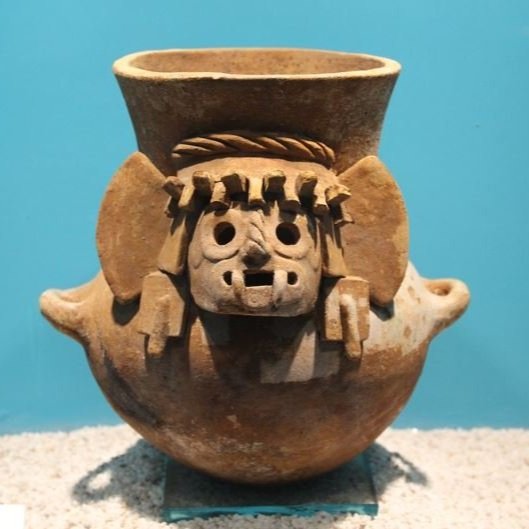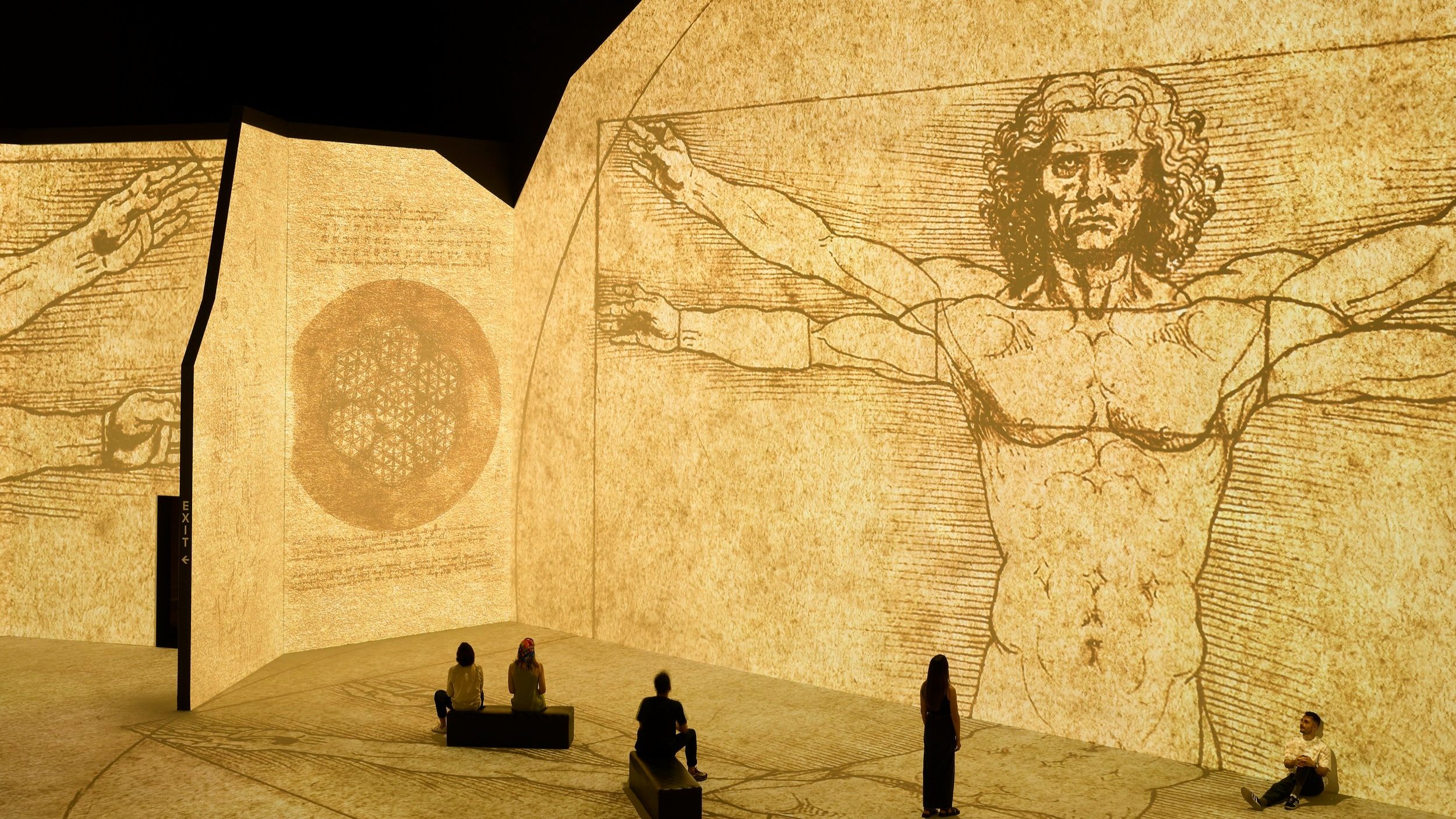Grayson Perry’s Cultural Impact and Legacy
Photo Credit: Alan Healing the Wound, 2021, by Grayson Perry
The contemporary British artist Grayson Perry, from Chelmsford, Essex is renowned for using satire and social commentary to explore complex themes in his artworks. Through his tapestries, ceramics, prints and other media, Grayson Perry provides witty yet incisive examinations of topics like social class, gender norms and national identity.
In this article I explore Grayson Perry’s legacy and cultural impact upon the artworld and wider society.
Table of Contents
An Introduction to Grayson Perry
The Use of Satire in Grayson Perry's Art
Themes Explored in Grayson Perry's Art
Grayson Perry's Exploration of Social Class and Hierarchy
Grayson Perry's Artistic Relationship with Consumerism and Materialism
An Introduction to Grayson Perry
Grayson Perry emerged in the 1980s as a leading figure in the Young British Artists movement. His distinctive visual style combines traditional crafts like pottery and embroidery with pop culture imagery and texts. This juxtaposition forms the basis for Perry’s satirical take on societal constructs.
Grayson Perry is also known for assuming the feminine alter-ego Claire in his public appearances. This engenders his art with an element of performance and gender play that adds to his social commentary.
Grayson Perry won the Turner Prize in 2003 for his ceramic pottery. The Turner Prize jury recognised Grayson Perry for his vase series that featured intricate decorative elements as well as disturbing and satirical themes exploring topics like sexuality, childhood, and conflict. Some of his notable winning pots included Walthamstow Tapestry featuring images of pain and childbirth, and Self-Portrait with Wound depicting an adult dressed as a little girl. Grayson Perry’s pottery combined excellent technical skill with conceptual depth, pushing ceramic art into new avant-garde territory and capturing the jury’s attention.
Some of Grayson Perry’s most famous and influential artworks include:
Memory Jar: A vase covered in photographs cut up into shards of a married couple, one of whom had dementia.
Comfort Blanket: A gigantic tapestry which tried to capture British values.
The Vanity Of Small Differences: A tapestry collection that journeys through social mobility and aesthetic taste.
A House For Essex: A distinctive house in Wrabness, Essex, full of Perry’s art.
We’ve Found The Body Of Your Child: A vase that deals with child abuse in the home.
Julie and Rob: Matching ceramic busts of Perry and his wife imitating blue and white pottery that explores their relationship.
Photo credit: A House for Essex by Grayson Perry in Wrabness, Essex
Grayson Perry was knighted in 2013 for his services to contemporary art. He was officially awarded a CBE (Commander of the Order of the British Empire). At the ceremony, Perry wore a navy suit that he had customised with locks, bows and loud red platform heels. This encapsulated his transgressive public persona. The knighthood came shortly after Perry won a second British TV BAFTA award for his Channel 4 program All In The Best Possible Taste.
The Turner Prize winner has become a prominent voice in public discourses around social issues. His popularity beyond the contemporary art world enables Perry to bring alternative perspectives into the cultural mainstream.
The Use of Satire in Grayson Perry’s Art
Grayson Perry is well known for using satire and humour in his ceramic vases, tapestries, and prints to comment on modern life and society.
Often adopting an alter-ego named Claire, Perry creates highly decorative and intricate works that attract viewers in before hitting them with an uncomfortable or absurd juxtaposition of images intended to provoke critical thought.
One of Grayson Perry’s most famous satirical series is The Vanity of Small Differences, a set of six tapestries chronicling the life of a fictitious character named Tim Rakewell as he climbs the social ladder from working class beginnings to a wealthy, materialistic existence.
Grayson Perry satirises the British class system, consumerism, and social aspirations through humorous and sometimes grotesque imagery. For example, in one tapestry titled The Adoration of the Cage Fighters, Tim has transformed into a wealthy art collector surrounded by tribal art and bodyguards, suggesting the empty status-seeking of the upper class. The ornate decorative backgrounds collide with chaotic contemporary elements, heightening the absurdist tone.
Perry also uses satire in his vases depicting 21st century moral tales. His vase Divorce playfully depicts the banal tragedy of divorce through flowery embellishments juxtaposed with images of a house being split in two, a heart being sawed in half, and two young children crying. The exaggerated decorations poke fun at the overly sentimental way divorce is sometimes portrayed.
Grayson Perry’s artworks challenge us to reconsider our own pretensions or social conditioning through disruptive, ironic humour. While always playful on the surface, his satirical art makes thoughtful statements on the contradictions and absurdities of contemporary society.
Themes Explored in Grayson Perry’s Art
Here is a summary of the major themes explored in Grayson Perry’s body of work:
Social class and status: Perry often satirises the British class system, social aspiration, and the emptiness of status symbols. His works depict exaggerated class stereotypes and characters desperately trying to climb the social ladder.
Consumerism and materialism: Through his depictions of characters obsessed with shopping, brand names, and showing off wealth, Grayson Perry critiques consumerism and materialism in modern society.
Identity: Grayson Perry explores how people construct personal and social identities, sometimes adopting alter-egos in his work. His frequent use of masks, costumes, and cultural symbols comments on the fluidity and performance of identity.
Gender and sexuality: Grayson Perry challenges gender stereotypes and assumptions about masculinity and femininity in his artwork. His cross-dressing alter-ego Claire defies conventions.
Relationships and emotions: Human relationships, including romance, marriage, family, and divorce, are common themes Perry satirises. He uses humour and irreverence to poke fun at relationship conventions.
Beauty and aesthetics: Grayson Perry’s ornate, decorative aesthetic often contrasts with disruptive contemporary imagery to provoke critical reflection on taste, beauty ideals, and visual pleasure.
Religion and morality: Perry satirises religion and self-righteous moralising in some of his works, exploring hypocrisy and groupthink. Some works can be seen as irreverent commentaries on moral standards.
Contemporary culture: Analysing mass media, consumerism, politics, and social relations, Perry’s work holds up a mirror to the absurdities and pretensions of contemporary British and Western culture.
Grayson Perry’s Exploration of Social Class and Hierarchy
One of the most prominent themes in British artist Grayson Perry’s body of work is his satirical yet poignant look at social class hierarchies and aspirations. Through a variety of media including ceramics, tapestries, and prints, Perry provides witty and sometimes absurd commentary on British social stratification and the rigid class system.
Critiquing Class Stereotypes
Many of Perry’s artworks feature exaggerated caricatures representing different rungs of the social ladder.
Scenes of mundane living spaces, families and relationships offer an intimate, humanising portrayal of a demographic often marginalised in media and art. The ordinariness heightens the perceptiveness of Grayson Perry’s class commentary.
His ceramic vases depict working class characters in tracksuits alongside the wealthy upper class wearing suits and pearls. He satirises rigid social stereotypes, while highlighting the pretentiousness across all classes. For example, his tapestry The Upper Class at Bay shows aristocrats in a hunting scene but their formally-attired dogs and horses mock their cultivated airs.
Grayson Perry examines class stereotypes and exposes the performance inherent in projecting class status.
Aspiration and Social Climbing
A common theme in Perry’s work is the notion of social climbing and the emptiness of aspiration.
A repeated motif is the notion of social mobility across class boundaries. Perry satirises the vacuousness of 'keeping up appearances' while acknowledging the yearning for more.
His ten-piece tapestry series The Vanity of Small Differences satirises the British obsession with class by tracing the social ascent of Tim Rakewell. Perry covers Rakewell’s journey from working class beginnings to a wealthy, vacant existence, suggesting the pointless striving and loss of meaning that accompany social mobility. The prominent placement of brands and status symbols in the ornate but absurd tapestries emphasises the hollow priorities of consumer culture.
While Grayson Perry satirises all class pretensions, he often directs his sharpest wit at the wealthy elite. His ceramic works portray the rich as frivolous, arrogant, and oblivious to others’ suffering.
In one vase, the wealthy literally look down their noses at the poor begging below. By adorning the elite figures in ornate finery and flowery decoration, Perry highlights the absurd disconnect between their opulence and others’ deprivation. His use of vibrant flowers and other decorative elements dazzles viewers aesthetically before they discern the social commentary.
Grayson Perry skilfully wields humour, exaggeration, and juxtaposition in his artwork to offer cultural critique. His incisive satire of social hierarchies and class tensions reveals pretensions across all of British society.
Grayson Perry’s Artistic Relationship with Consumerism and Materialism
Grayson Perry is well known for satirising consumerism and materialism in contemporary society through his tapestries, pottery, and other artwork. Grayson Perry sharply critiques the empty status-seeking and social pretensions that accompany obsession with brands, wealth, and possessions.
Grayson Perry explores consumerism through ceramic works depicting characters proudly displaying their shopping purchases and status objects like jewellery, yet appearing robotically lifeless behind their masks of possessions. The artist visually conveys how consumption becomes an inadequate substitute for community and purpose.
In interviews, Grayson Perry has directly addressed society’s addiction to shopping and acquisition, suggesting it often represents unfulfilled emotional voids: “Shopping is a big thing in our culture; it is how we define ourselves and interact socially." His satirical art reflects this consumerist culture.
Ultimately, Grayson Perry’s fascination with brands and commodities springs from their symbolic value rather than inherent worth. His garish use of logos reveals how consumer goods build identity and associations of status or lifestyle values. By foregrounding the emptiness behind such symbols, he provokes viewers to reconsider their own relationship with consumption and presentation through possessions. His skillful social satire exposes the pretenses and rituals of materialism that pervade modern capitalist society.
Grayson Perry’s Examination of Gender, Sexuality, and Identity
Fluidity of Identity
A major theme in Grayson Perry’s work is the fluidity and malleability of identity. Perry challenges fixed notions of gender, sexuality, and class by adopting his cross-dressing female alter-ego Claire and creating artwork exploring persona and performance. His tapestries often feature characters trying on different identities and costumes as they climb the social ladder, underscoring the constructed nature of selfhood. Perry suggests identity stems from both inherent qualities and contextual social factors that shape personas.
Subversion of Gender Conventions
Perry subverts gender conventions in his works by playfully blending masculine and feminine visual elements. His vase sculpture Alan Measles depicts a transvestite superhero character that fuses muscles and masculinity with high heels and a corset. Perry’s Meghan figurines feature Prince Harry in fishnet tights, defying norms. The artist shows how gender expression exists on a fluid spectrum. His Claire persona overtly challenges assumptions that masculinity and femininity are fixed binaries tied to biological sex. Perry demonstrates the possibility of integrating both within one identity.
Perry uses Claire as a vehicle to challenge the stereotypical depictions of masculinity in media and culture. By dramatising alternative aesthetics and behaviours through Claire, he reveals the reductive nature of masculine archetypes.
Prints such as Map of an Englishman provide a psychological portrait of manhood that is vulnerable, nuanced and self-reflective. This stands in stark contrast to mainstream stereotypes of masculine strength and stoicism.
Sexuality and Relationships
Many of Perry’s tapestries, prints, and pots explore themes of sexuality, romance, and intimate relationships. Works like Gay Marriage satirise relationship conventions and feature same-sex and transgender couples. Perry suggests sexuality is complex, occupying diverse positions between poles of masculinity and femininity. His Pots of Homosexuality series examines sexuality across history. Perry’s work acknowledges the spectrum of sexual identities and relationships that defy simplistic categorisation.
Cultural Commentary
Ultimately, Perry’s gender-fluid personas provide insightful cultural commentary. His work thoughtfully examines how identities are constructed through complex interactions of internal desires and societal conditioning. While acknowledging biological differences, Perry revels in the postmodern fragmentation of gender, class, and sexuality. His work demonstrates the boundless possibilities for self-expression when identity categories are openly dissected and reassembled. Perry reminds us that people themselves craft identities from cultural resources, empowered to transgress boundaries.
The Lasting Impact of Grayson Perry’s Art
During his career, Grayson Perry has cemented himself as a prominent figure in the contemporary art world and British cultural landscape. Through mainstream popularity and critical acclaim, his impact is evident.
A key aspect of Perry‘s influence is how he has enabled marginalised narratives to permeate the cultural mainstream. His accessible satire provides a bridge for new ideas to reach wider audiences.
Beyond the art domain, Grayson Perry has become an important voice shaping wider discussions around identity, gender and class. His documentaries and public appearances foster public dialogues on complex social issues.
Pieces like Claire's Coming Out Dress encapsulate his role in advancing national conversations in the early 2000s on themes like masculinity and cross-dressing.
Grayson Perry’s unique combination of incisive wit and craft mastery has cemented his position as a seminal artist for younger generations.
I hope you have found this article about Grayson Perry interesting. If you would like to get in contact, please email me at sarahransomeart@gmail.com.









